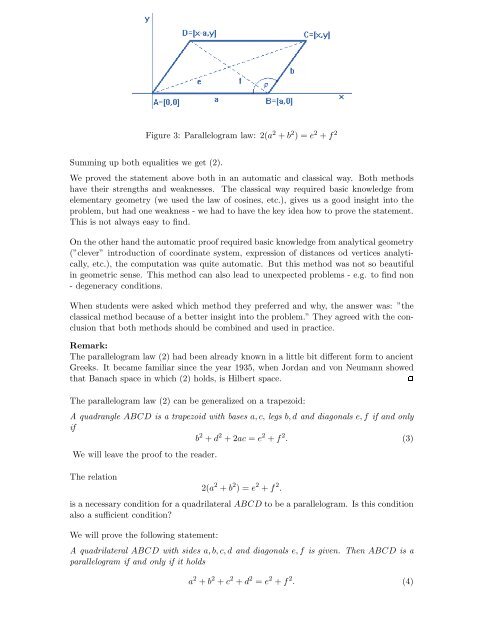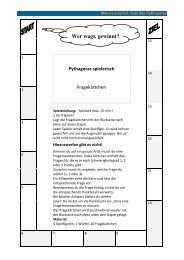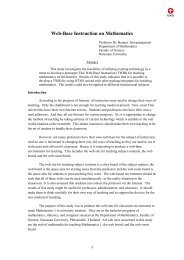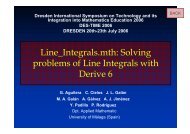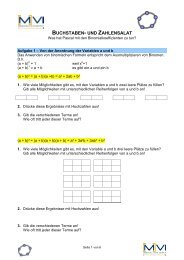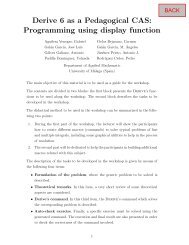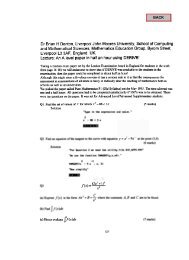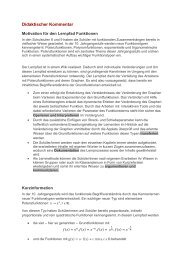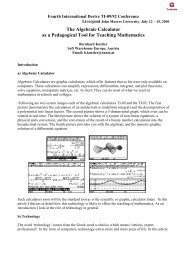Discovering and proving geometric inequalities by CAS (pdf)
Discovering and proving geometric inequalities by CAS (pdf)
Discovering and proving geometric inequalities by CAS (pdf)
You also want an ePaper? Increase the reach of your titles
YUMPU automatically turns print PDFs into web optimized ePapers that Google loves.
Figure 3: Parallelogram law: 2(a 2 + b 2 )=e 2 + f 2<br />
Summing up both equalities we get (2).<br />
We proved the statement above both in an automatic <strong>and</strong> classical way. Both methods<br />
have their strengths <strong>and</strong> weaknesses. The classical way required basic knowledge from<br />
elementary geometry (we used the law of cosines, etc.), gives us a good insight into the<br />
problem, but had one weakness - we had to have the key idea how to prove the statement.<br />
This is not always easy to find.<br />
On the other h<strong>and</strong> the automatic proof required basic knowledge from analytical geometry<br />
(”clever” introduction of coordinate system, expression of distances od vertices analytically,<br />
etc.), the computation was quite automatic. But this method was not so beautiful<br />
in <strong>geometric</strong> sense. This method can also lead to unexpected problems - e.g. to find non<br />
- degeneracy conditions.<br />
When students were asked which method they preferred <strong>and</strong> why, the answer was: ”the<br />
classical method because of a better insight into the problem.” They agreed with the conclusion<br />
that both methods should be combined <strong>and</strong> used in practice.<br />
Remark:<br />
The parallelogram law (2) had been already known in a little bit different form to ancient<br />
Greeks. It became familiar since the year 1935, when Jordan <strong>and</strong> von Neumann showed<br />
that Banach space in which (2) holds, is Hilbert space.<br />
The parallelogram law (2) can be generalized on a trapezoid:<br />
A quadrangle ABCD is a trapezoid with bases a, c, legs b, d <strong>and</strong> diagonals e, f if <strong>and</strong> only<br />
if<br />
b 2 + d 2 +2ac = e 2 + f 2 . (3)<br />
We will leave the proof to the reader.<br />
The relation<br />
2(a 2 + b 2 )=e 2 + f 2 .<br />
is a necessary condition for a quadrilateral ABCD to be a parallelogram. Is this condition<br />
also a sufficient condition?<br />
We will prove the following statement:<br />
A quadrilateral ABCD with sides a, b, c, d <strong>and</strong> diagonals e, f is given. Then ABCD is a<br />
parallelogram if <strong>and</strong> only if it holds<br />
a 2 + b 2 + c 2 + d 2 = e 2 + f 2 . (4)


